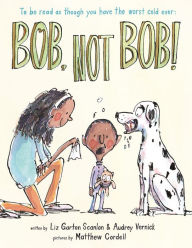Children's Writer's World warmly welcomes author Rita Monette.
 How is writing a series different
than writing a stand alone book?
How is writing a series different
than writing a stand alone book? If you don’t know ahead of time you are going to create a series, it can catch you off guard. You will find yourself researching your own books for information.
When I wrote The Legend of Ghost
Dog Island, book one in the Nikki Landry Swamp Legend Series, I didn’t intend
to write a series. I merely wanted to write a story about my childhood growing
up in the Louisiana bayous. Then it became about a legend my father used to
tell. When I got to the end, I began thinking about other legends I could have
my characters involved in. But that’s a far as it got. That was until some of
my readers began asking for more.
As I began book two in the
series,The Curse at Pirate’s Cove, I realized that writing the second book wasn’t going to be easy, when I thought it would be a piece of cake. Little did I know how
difficult it would be to keep track of all the characters and their physical
traits, voice, and mannerisms a whole year after writing the first book.
It wasn’t until I started
compiling book three of my series, The Secret in Mossy Swamp, that I decided to
create a notebook with a page for each character mentioned in books one and
two. Something as small as eye color, or as complicated as a secondary
character’s parents’ occupation, can
send you scurrying when it comes up again.
 Another problem I’ve found with a
series is that, if you don’t want to drag a character, or pet, through many
books, and you can’t bear to kill them off, think twice about putting them in
to begin with. So now I have to tell my hero NO when she asks for another pet.
Another problem I’ve found with a
series is that, if you don’t want to drag a character, or pet, through many
books, and you can’t bear to kill them off, think twice about putting them in
to begin with. So now I have to tell my hero NO when she asks for another pet.
Still, there is the issue of a
reader reading your books out of sequence. I’ve stumbled upon the problem of
revealing the mystery in book one, by bringing to life a character in book two
that was suspected as dead in the beginning of book one. Thank goodness for
second editions.
You can visit Rita's blog at:
http://ritamonette.blogspot.com
You can visit Rita's blog at:
http://ritamonette.blogspot.com




